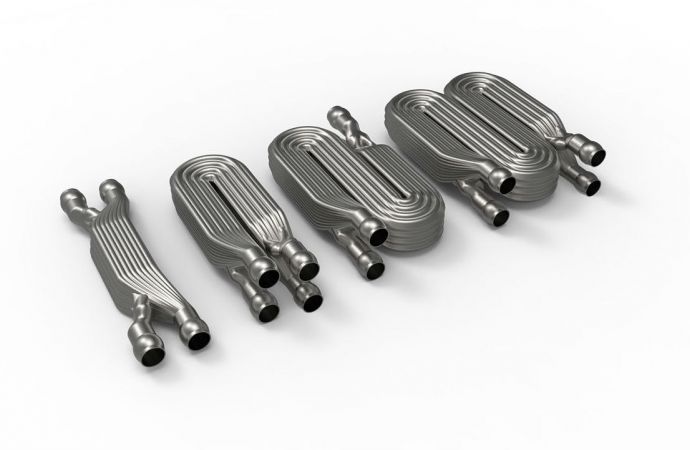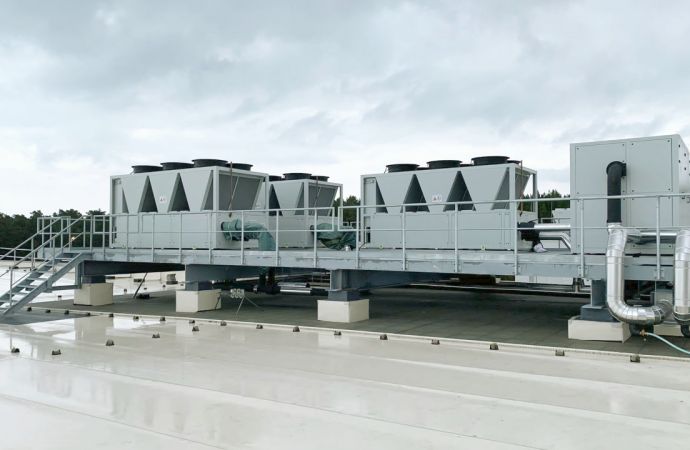re-generate, a startup company, is showing how the digitally driven manufacturing process can make better, more efficient heat exchangers.

3D printed heat exchangers
German startup company re-generate is working with researchers and industry partners to introduce additive manufacturing into the HVAC&R industry. The process, more popularly known as 3D printing, creates three-dimensional solid objects from a digital file.
The initial focus is on developing market interest in small 3D-printed heat exchangers.
re-generate, based in Leipzig, wants to promote 3D printing as a way equipment manufacturers can create better products. The company is convinced that this manufacturing process, by using new materials and geometries, can deliver faster innovation cycles with immediate production of prototypes, save money by reducing the need for complex traditional tools, and reduce carbon footprint by re-using materials and employing decentralized production.
“We believe in efficient technology, better design and a lower environmental footprint in future HVAC&R solutions,” said Nina Masson, Founder and CEO of re-generate. “3D printing helps our partners shape a smarter heating and cooling business, while delivering in all three areas.”
One of the advantages of 3D printing, compared to traditional molding and casting methods, is that a much wider variety of materials can be used, including metals, ceramics, silica and plastic, increasing potential application areas. 3D printing is also cost effective, especially when manufacturing just a few units or prototypes.
FOCUS ON HEAT EXCHANGERSre-generate is working in a joint project together with scientists from the Fraunhofer Institute for Machine Tools and Forming Technology IWU, Dresden, Germany, to develop the business potential for “miniature” 3D-printed heat exchangers. They project that these heat exchangers will be at minimum 50% more energy efficient than reference heat exchangers, and expect the production process to be at least 50% faster.
The potential applications for the small 3D-printed heat exchangers are currently viewed as any installation where space is at a premium, and where spatial flexibility is needed. Current proposed applications include residential and mobile air conditioning, heat pumps, and any application where microchannel heat exchangers are used today.
JOINT PROJECT SEEKS INDUSTRY PARTNERSre-generate’s role in the joint project will be to develop a set of parameters, like cost effectiveness and resource efficiency, for the new kind of 3D-printed miniature heat exchangers while the Fraunhofer IWU specifically aims to streamline the 3D design process.
re- generate will also identify the potential applications and business uses, and will act as a facilitator to the industry. The company also aims to develop new educational activities like workshops for engineers, research and commercial staff. For this, re-generate and the Fraunhofer IWU are looking for HVAC&R industry partners interested in comparing their current business case with the potential of the 3D printed miniature heat exchangers.
In a previous project, the Fraunhofer scientists already proved that 3D printing technology can reduce the size of heat exchangers, while at the same time increase efficiency. They improved the compactness of the 3D-printed heat exchangers by more than 50%, compared to reference heat exchangers, and increased the volume-dependent efficiency by 46% to 126%. In this project water was modeled as cooling agent.
These improvements were made possible by changing the shape of the heat exchanger channels and the thickness of the walls, as heat exchange and pressure loss directly depends on the geometric shape of the channels, and the 3D printing technology imposes no limits to the shape of these structures.You can read more about re-generate and 3D printing here.
This article originally appeared in the February 2020 issue of Accelerate Magazine.
Related stories



